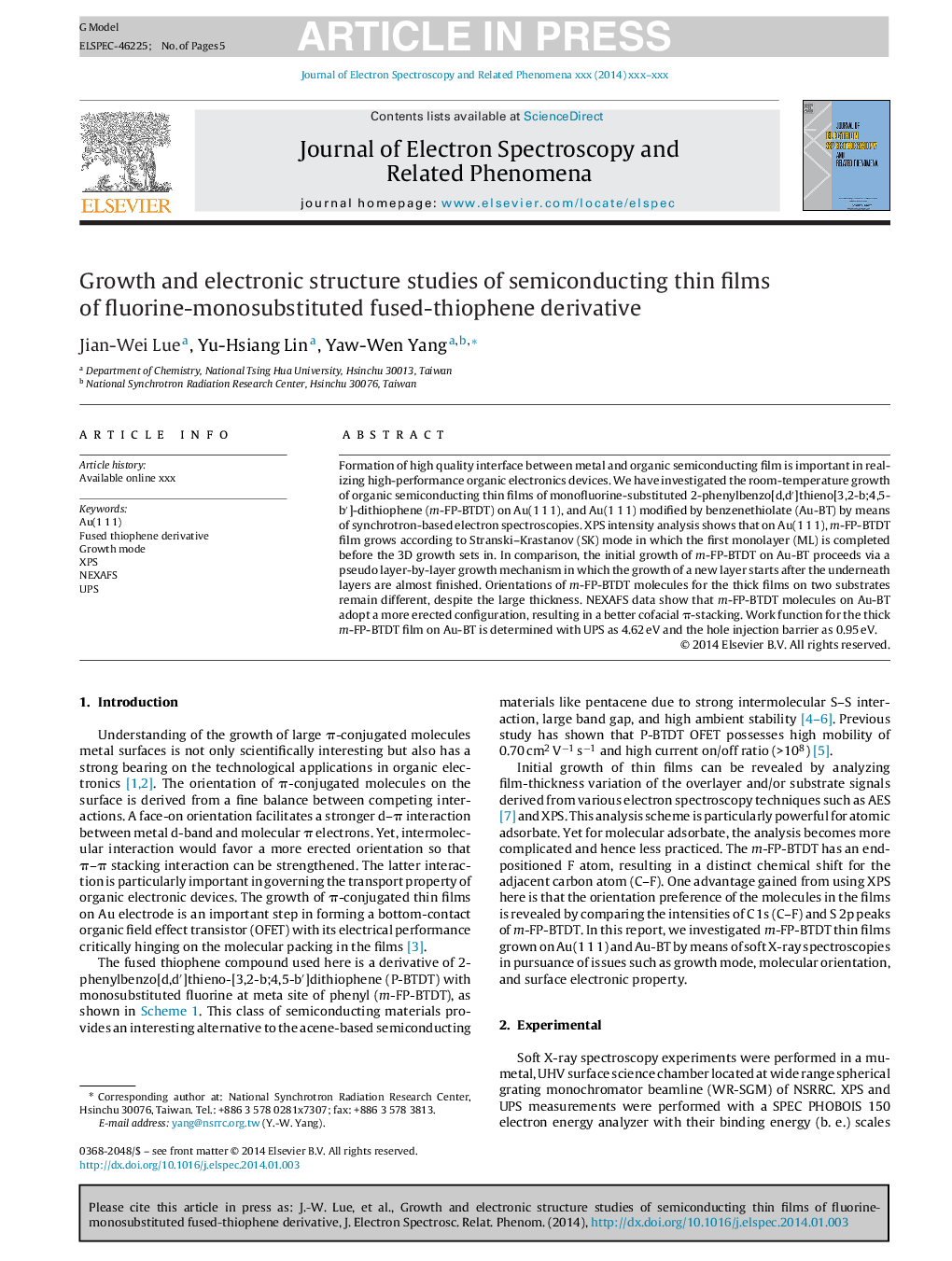| Article ID | Journal | Published Year | Pages | File Type |
|---|---|---|---|---|
| 5395820 | Journal of Electron Spectroscopy and Related Phenomena | 2014 | 5 Pages |
Abstract
Formation of high quality interface between metal and organic semiconducting film is important in realizing high-performance organic electronics devices. We have investigated the room-temperature growth of organic semiconducting thin films of monofluorine-substituted 2-phenylbenzo[d,dâ²]thieno[3,2-b;4,5-bâ²]-dithiophene (m-FP-BTDT) on Au(1Â 1Â 1), and Au(1Â 1Â 1) modified by benzenethiolate (Au-BT) by means of synchrotron-based electron spectroscopies. XPS intensity analysis shows that on Au(1Â 1Â 1), m-FP-BTDT film grows according to Stranski-Krastanov (SK) mode in which the first monolayer (ML) is completed before the 3D growth sets in. In comparison, the initial growth of m-FP-BTDT on Au-BT proceeds via a pseudo layer-by-layer growth mechanism in which the growth of a new layer starts after the underneath layers are almost finished. Orientations of m-FP-BTDT molecules for the thick films on two substrates remain different, despite the large thickness. NEXAFS data show that m-FP-BTDT molecules on Au-BT adopt a more erected configuration, resulting in a better cofacial Ï-stacking. Work function for the thick m-FP-BTDT film on Au-BT is determined with UPS as 4.62Â eV and the hole injection barrier as 0.95Â eV.
Keywords
Related Topics
Physical Sciences and Engineering
Chemistry
Physical and Theoretical Chemistry
Authors
Jian-Wei Lue, Yu-Hsiang Lin, Yaw-Wen Yang,
